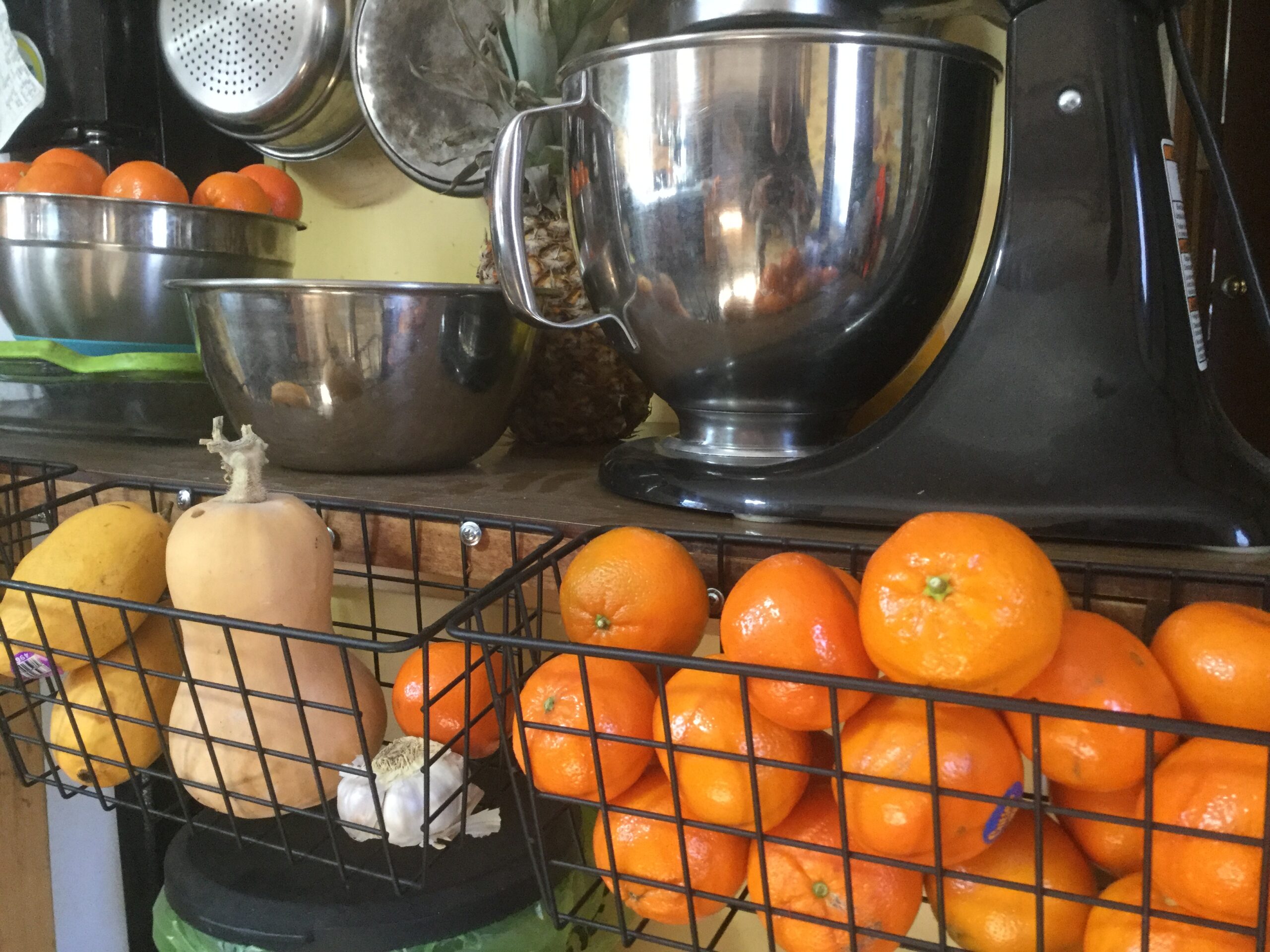
We needed some more fruit storage when our old hanging basket broke.
These metal baskets can be mounted on the edge of a kitchen counter or on a flat wall.
In addition, be sure to check out our older cooking posts.

We needed some more fruit storage when our old hanging basket broke.
These metal baskets can be mounted on the edge of a kitchen counter or on a flat wall.
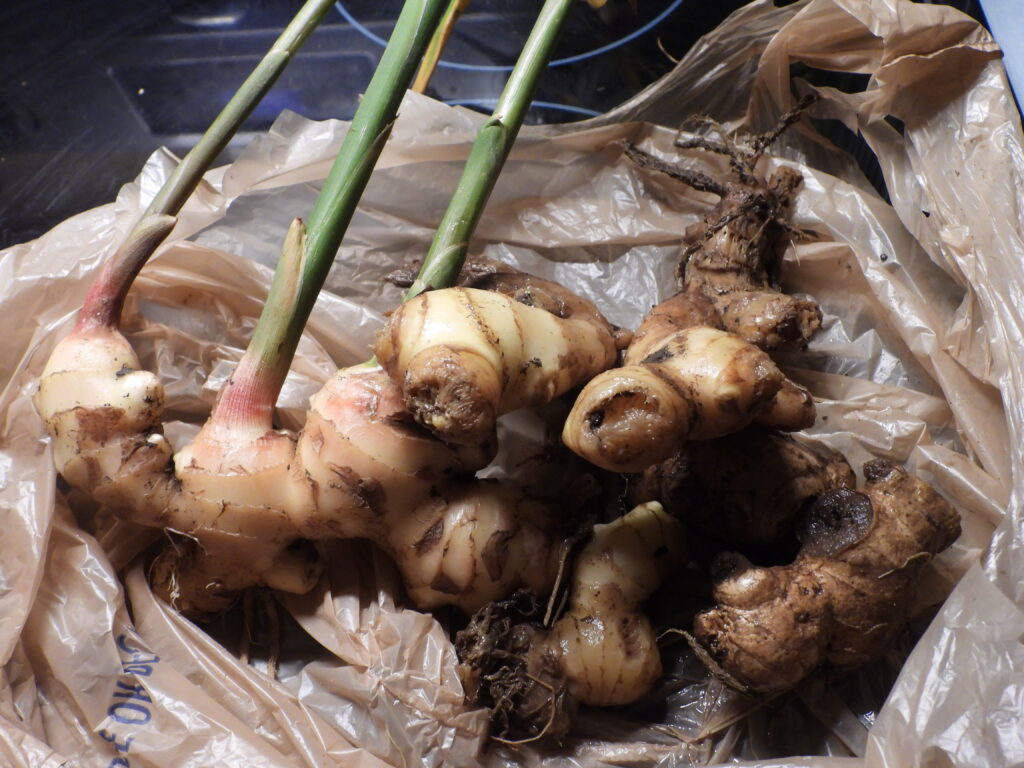
Last year, I wrote that, when growing ginger in the home garden, you should wait to harvest until after the leaves die back in the autumn. Now I’m not so sure that’s true.
This data isn’t actually from my own garden (although I am eating the result!). It all started when Mark’s mom cut up one rhizome to grow in a corner of a garden bed for my sake. “Harvest whenever you want,” she said.
When Mark and I dropped by at the end of September, the ginger plants still seemed to be growing so I decided to wait. But between then and the end of October, a light frost killed back all of the plants except one.
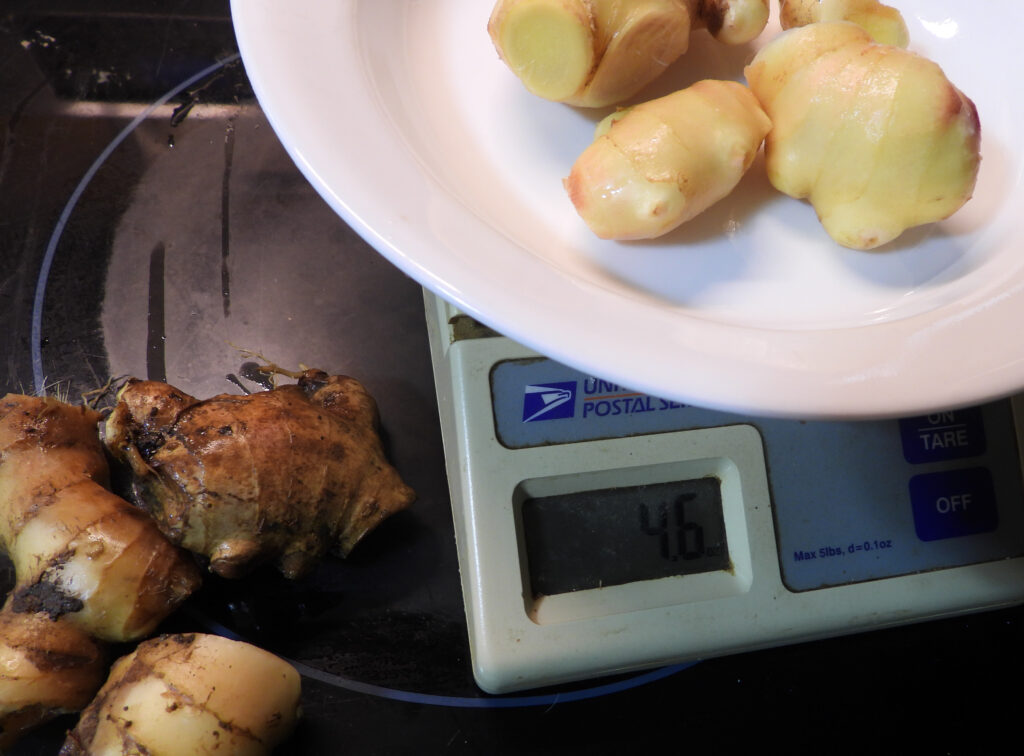
The ginger that kept its top turned out to be at its peak and made delectable pickled ginger. The plants that had died back came out of the ground with tougher skins (like what you’d find in the grocery store) and several were rotting.
Since pickled ginger is my favorite use for the rhizome and the recipe demands “baby” roots, I’ll aim to harvest before the first freeze next time. For folks who store their ginger on the shelf, you’ll definitely want to wait longer so the protective outer skin will form (although not so long you get the rotting I dealt with).
Not sure if that means harvesting immediately after the first freeze or before, although I suspect the trick is to start root pieces inside so the plants hit maturity before cold weather comes to call. I’d love to hear from folks who have experimented and figured the sweet spot out!
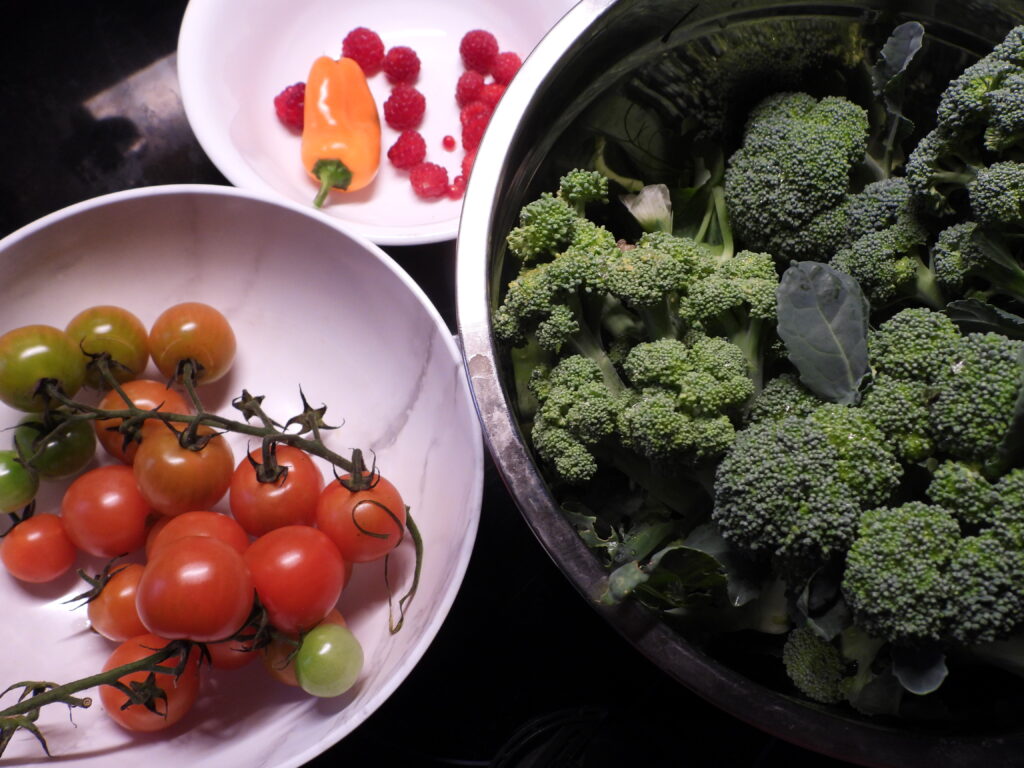
As a side note, growing ginger in a garden bed instead of in a pot definitely resulted in higher yields. And it was less finicky! So much so I might actually grow ginger myself next year rather than begging my mother-in-law to do the hard work for me.
In the meantime, I’m just enjoying my pickled ginger mixed into steamed veggies. That and hoping for more rain to boost our parched fall garden’s yields.
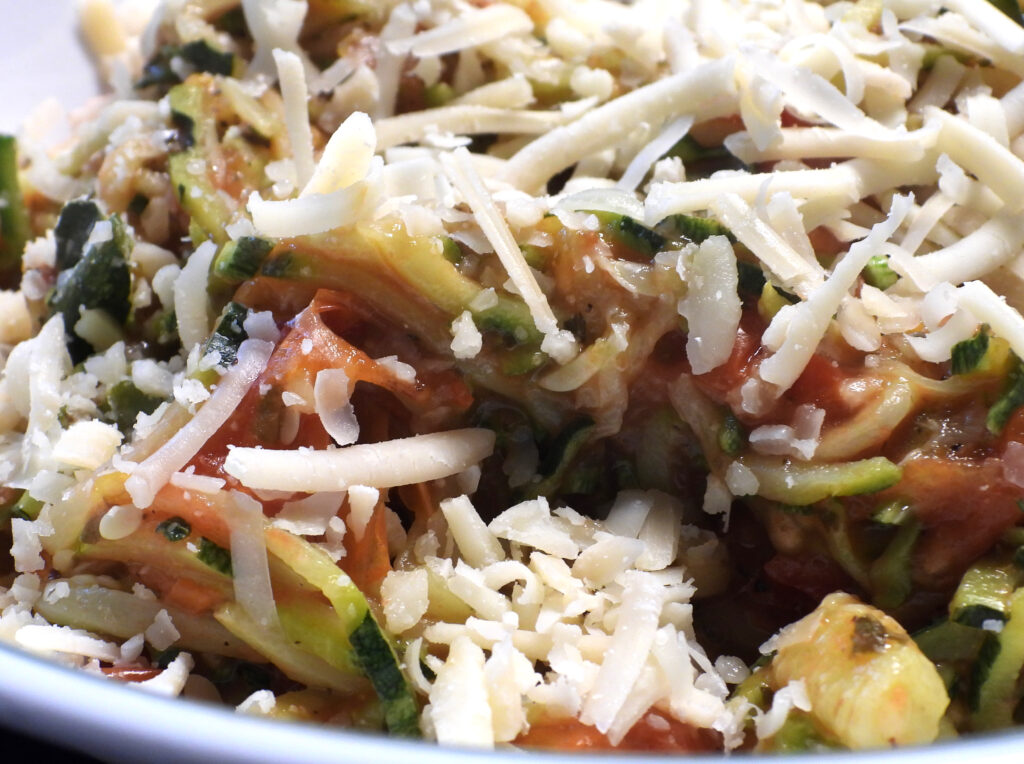
Are you swimming in summer squash like we are? While you can leave the excess on unsuspecting, non-gardeners’ porches, I’ve found the following one-pot recipe makes eating lots and lots of zucchini and other summer squashes so delicious the bounty ends up in your own belly instead.
Ingredients:
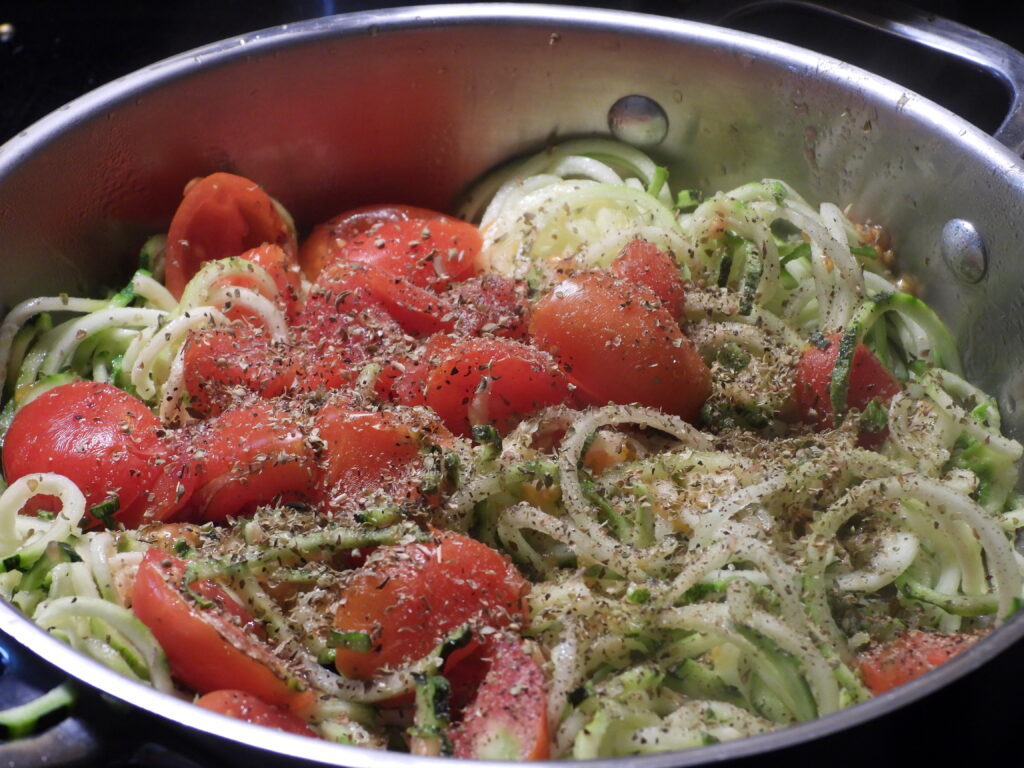
Cut the tomatoes in half and squeeze each one to release starter juices. Spiralize the squash and add it to a skillet along with the tomatoes. Cut through the mass of “noodles” a few times to shorten them. Add the salt, pepper, and oregano and cook on high heat, stirring occasionally, until the tomatoes have turned into a sauce and the squash noodles are al dente. Stir in the pre-cooked protein then garnish with parmesan and chow down!
How about you? Do you have favorite summer squash recipes that let you use up everything your garden produces?
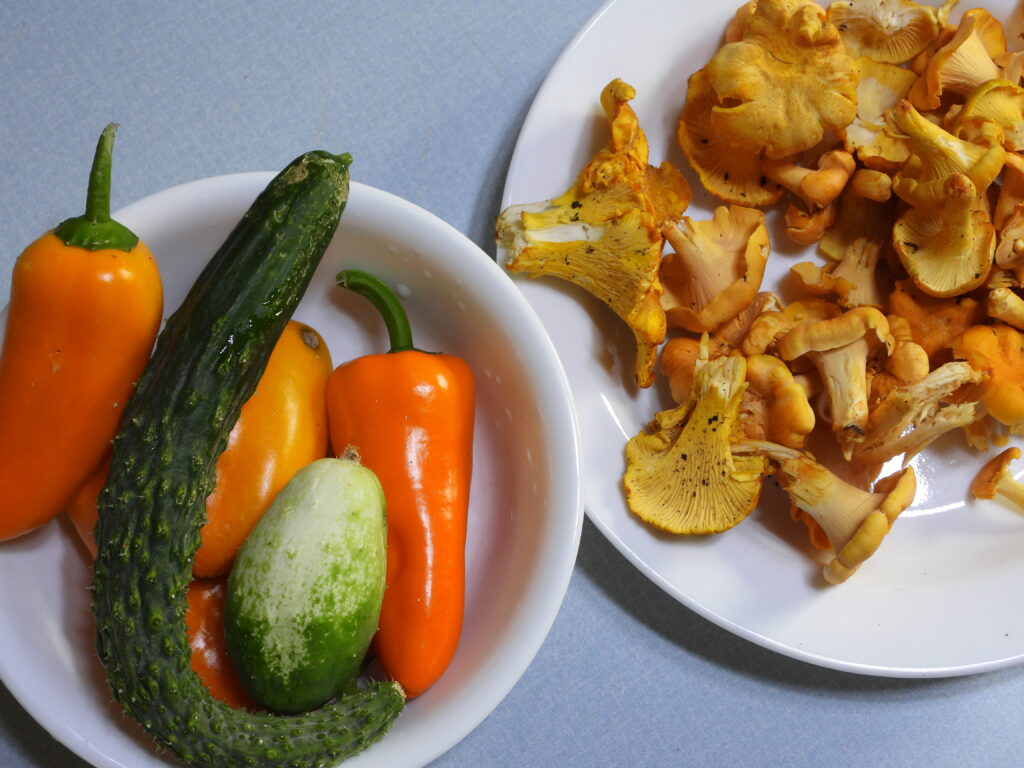
It’s harvest season! Mostly, this post is just pretty pictures I couldn’t resist snapping while bringing goodies in out of the garden and woods. But here are a few tips to add redeeming value:
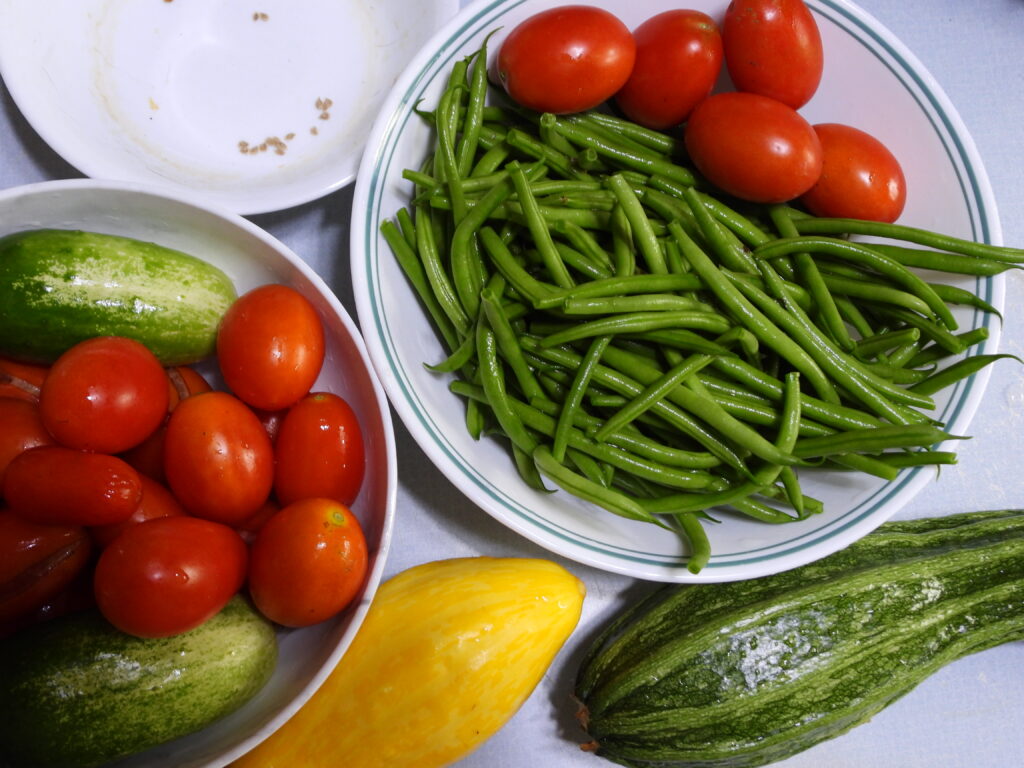
How’s your garden and pantry growing?
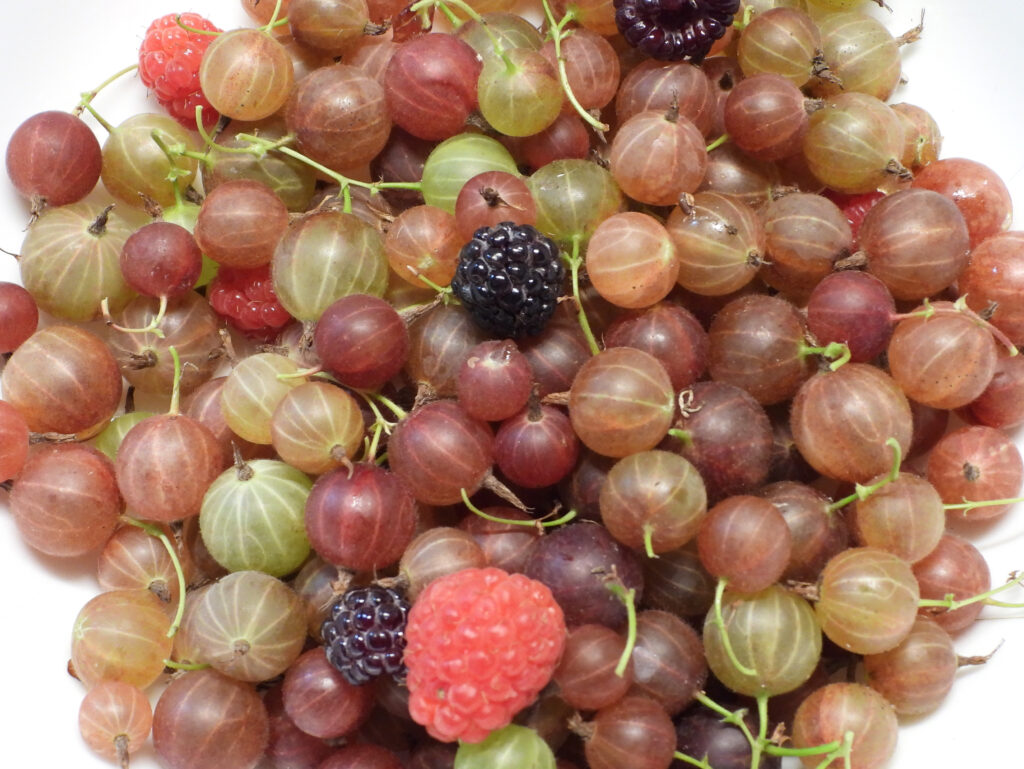
Fourteen years ago, Mom sent me her family recipe for Gooseberry Fool. Foolishly, I waited over a decade to give it a try. I also tweaked the ingredients a bit based on other recipes on the internet (and on Mom’s memory that the Fool she ate as a kid was thickened with an egg).
The recipe I used:
Cook the gooseberries and sugar over medium heat with just enough water so they don’t burn. Once the berries burst, remove them from the heat and send them through a foley mill (or use another method to get rid of the skins and most of the seeds).
In a separate container, mix the milk and egg well. Pour the eggy-milk mixture into the gooseberry puree and return to the heat, stirring constantly until it bubbles and thickens.
Cool the new mixture completely, then stir in whipped cream. Top with a raspberry if you have any left.
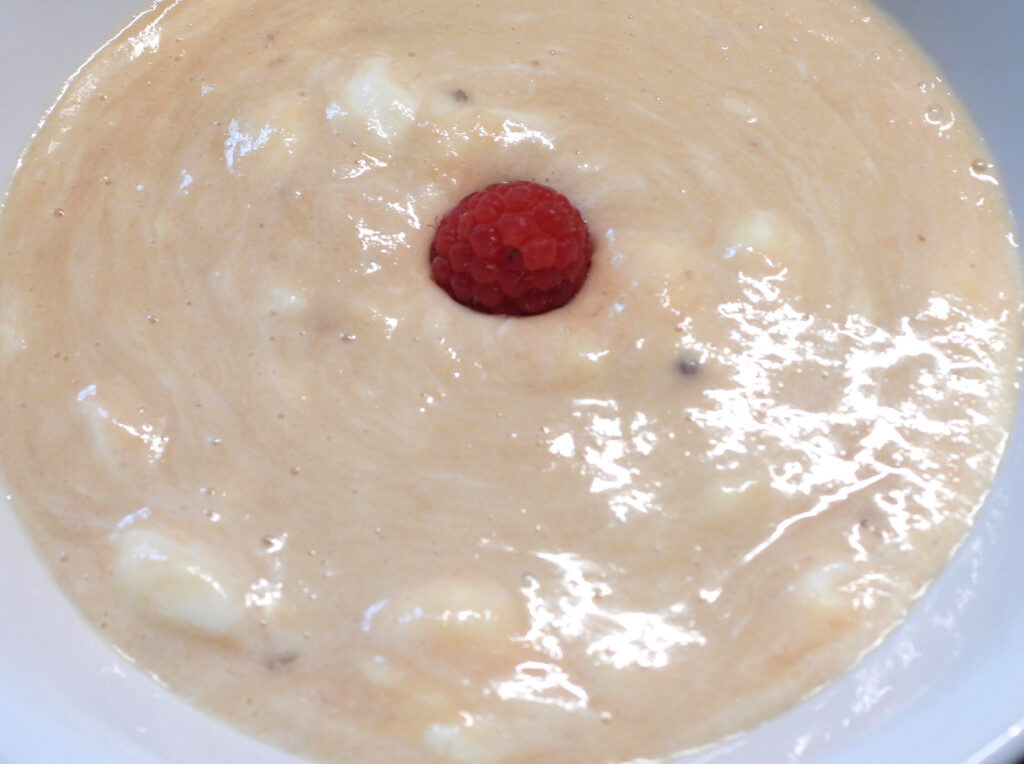
Then it was time for the taste test.
Anna: “It’s okay, but I like the raw berries better.”
Mark (who’s only so-so on raw gooseberries but hates to complain about food I put in front of him): “Hm. It’s… Um… Did you say there’s also the option of chocolate cake?”
I guess there’s a reason Gooseberry Fool isn’t a mainstream recipe any more…
It’s asparagus season and high time for an asparagus post! I’m not going to regurgitate the information you can find in any book or website about giving your plants a few years to get their feet under them before starting to harvest, keeping the weeds at bay, etc., though. Instead, I thought I’d share a few observations I’ve made over the last decade plus of growing our own asparagus then gorging on the harvest.
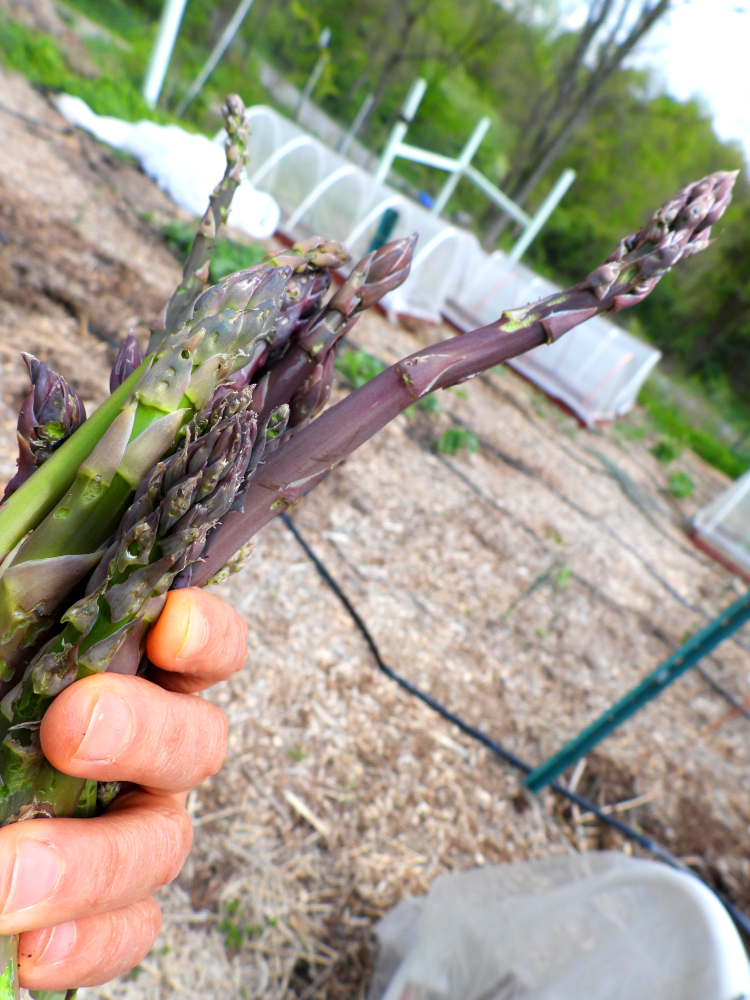
Don’t buy purple asparagus expecting it to look pretty on your plate. As soon as you cook them, purple spears turn green.
But do plant Purple Passion! Mark’s mom gave us five plants the same year we planted our main patch and they’ve turned out to be the earliest producers and the heaviest producers in our garden.
For the earliest harvests, rake back the mulch and any top-dressed compost a couple of weeks before you expect to see spears. This will let the ground warm faster and will buy you perhaps a week over your non-raking neighbors’ plots.
Of course, that opens you up to freeze damage which will melt your delicious veggies into goo. So, when you expect a freeze, head out and pick every spear in sight. Well, almost every spear. If an asparagus plant is less than three inches tall, I’ll instead take a leaf from my mom’s book and drop a handful of that raked-off mulch back over top for freeze protection. No need to remove it after freeze danger passes either. Pointy asparagus will push right on through.

Unlike grocery-store asparagus, ours tends to come out of the garden with some tiny spears and some huge spears. If they go into the oven all different sizes, the smallest spears will burn before the bigger ones turn sweet. So if you’re like us and crave the caramelized sweetness of asparagus roasted in olive oil until the edges go brown, be sure to cut up your spears to make them evenly sized.
That’s all there is to years of delicious harvests. Enjoy what we consider one of the easiest and most dependable crops!
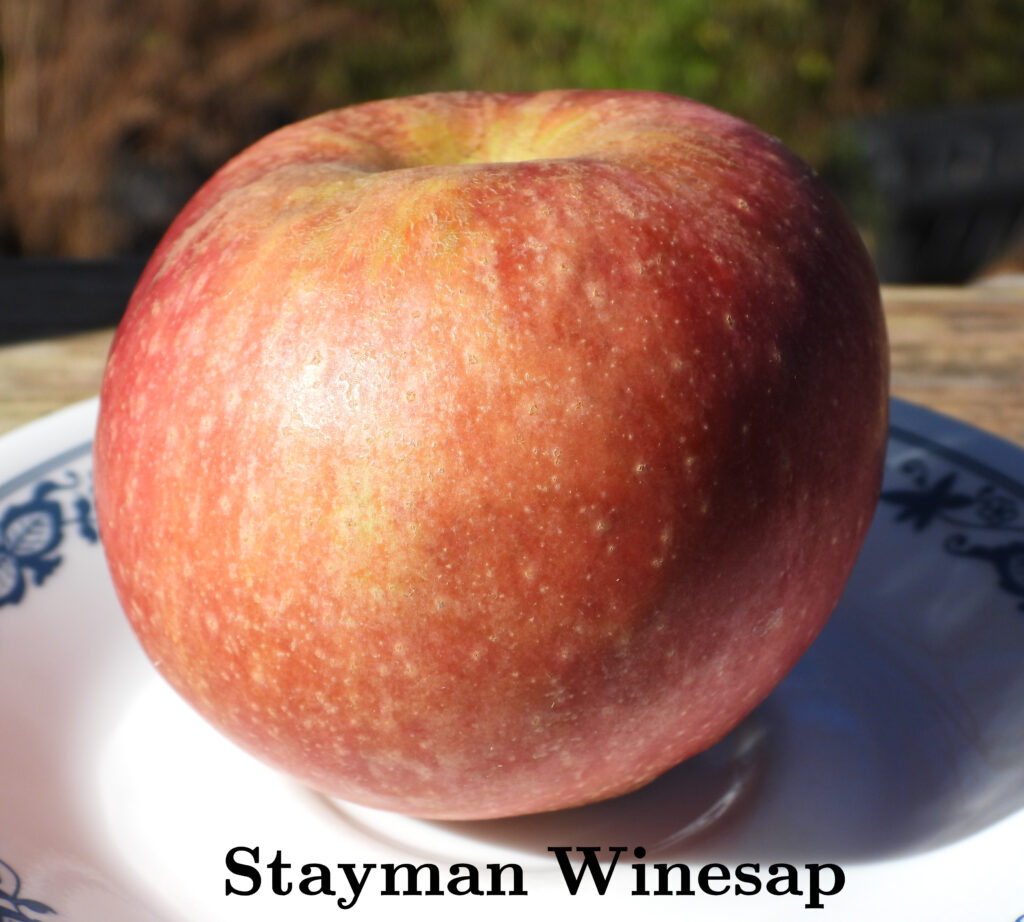
Our local farmer’s market has the most apple varieties I’ve ever seen, all harvested close to Athens, Ohio. As a result, I’ve been running taste tests over the last few years, picking new (and old) favorites.
Before I go on, I should tell you what I like in an apple — a good blend of sweet and tart, preferably also crisp (although taste is more important to me than texture). You won’t find apples like these at the grocery store even if they share these names. Head to your own farmer’s market, fruit stand, or U-pick orchard to find the tastiest treats.
Okay, which varieties won the prize? The first one is the old standby I’ve been enjoying since I was a kid — Stayman Winesap. When caught at its peak, this is an A+ apple. If harvested a bit too early, it tends toward sour and might be more of a B+. (Look for the bright red skin as a visual clue of sweetness.) Later in the winter, Winesaps turn mushy and are more of a B.
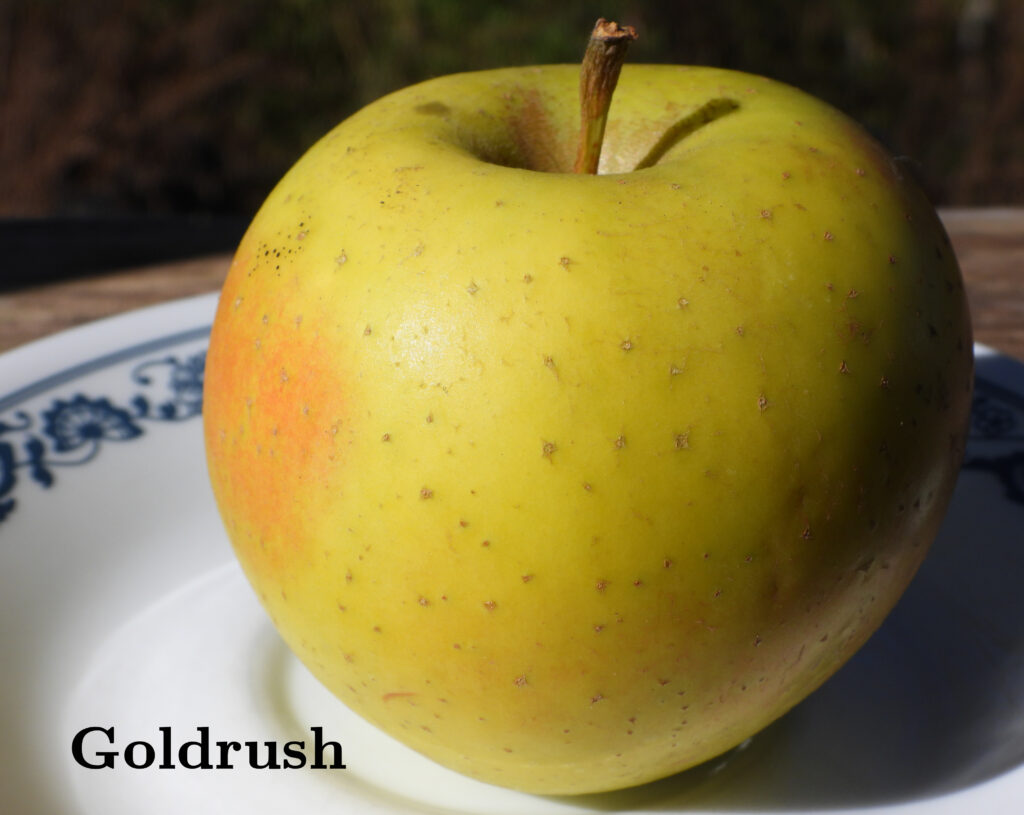
Goldrush was a new one on me, but has become my go-to apple in the winter. It’s a little sweeter than Winesap but still has some tartness and a good flavor complexity. Plus, it stays crisp for quite a long time. The tastiest Goldrush apples tend to have a bit of a red blush, but even the solid yellow ones are an A to A+.
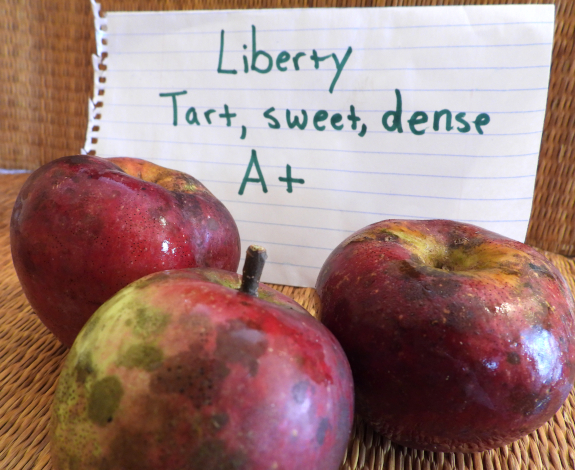
I’ve yet to find Liberty appples being grown by a traditional farmer, but homesteaders often plant them because they’ll bear fruit without any chemical sprays. They’re a bit denser than the others but boast a flavor explosion that definitely beats the pants off any other apple I’ve eaten. That said, I can’t be sure whether the difference is the variety or the cultivation method. Beyond-organic techniques lead to lots of micronutrients in the soil which in turn tend to turn flavors up extra high. Regardless, this is a solid A+ apple, maybe an A++.
I can’t wait to hear the results of your own taste tests. And if you end up with way too many apples after buying up every variety at the local farmer’s market, definitely try making a vat of skin-on applesauce.
When your harvest looks like this:
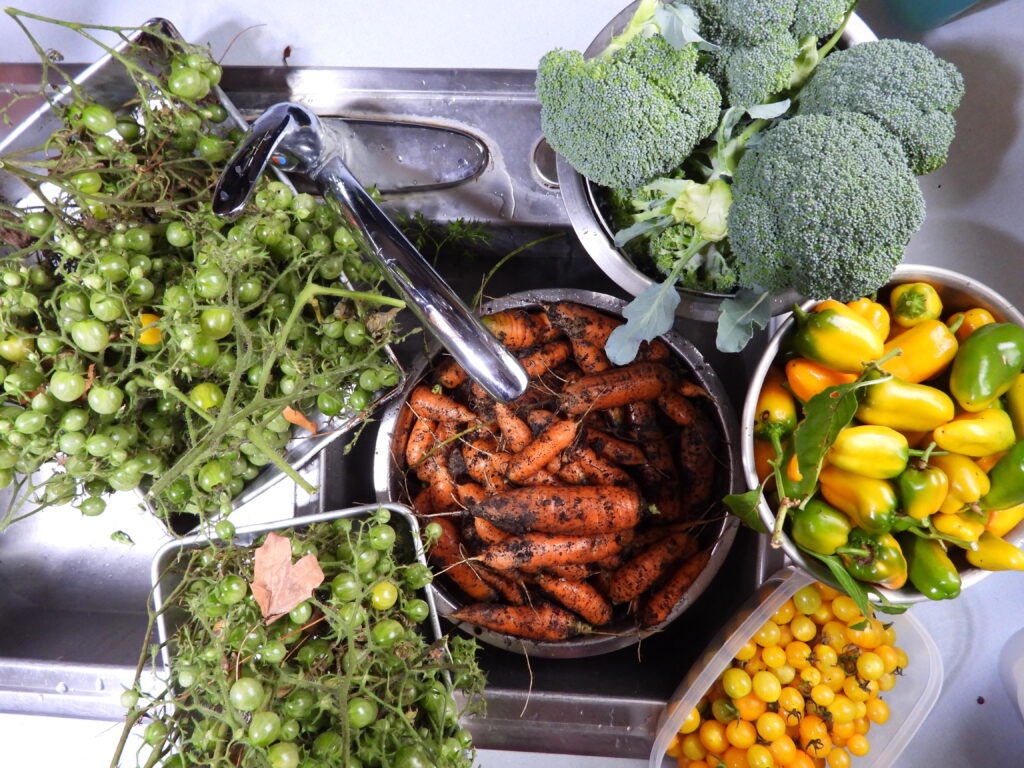
It’s time to cook this:

Serves 4.
Optional serving suggestions:
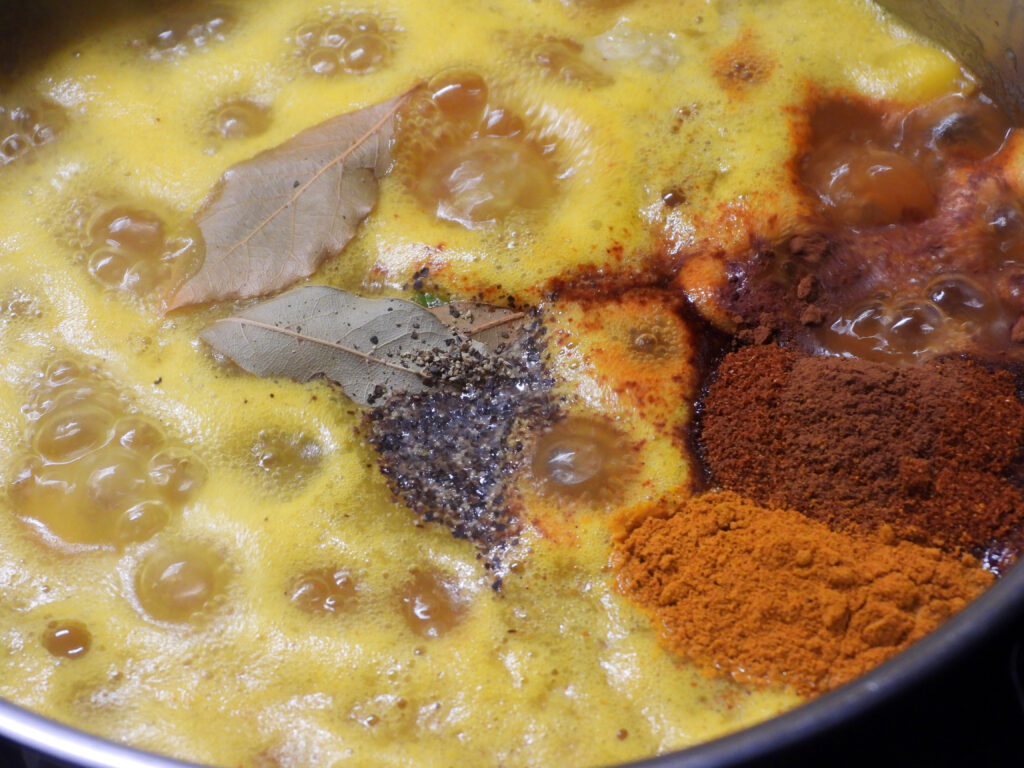
This is a basic soup recipe, so you don’t really need to read this part. Here’s what I did:
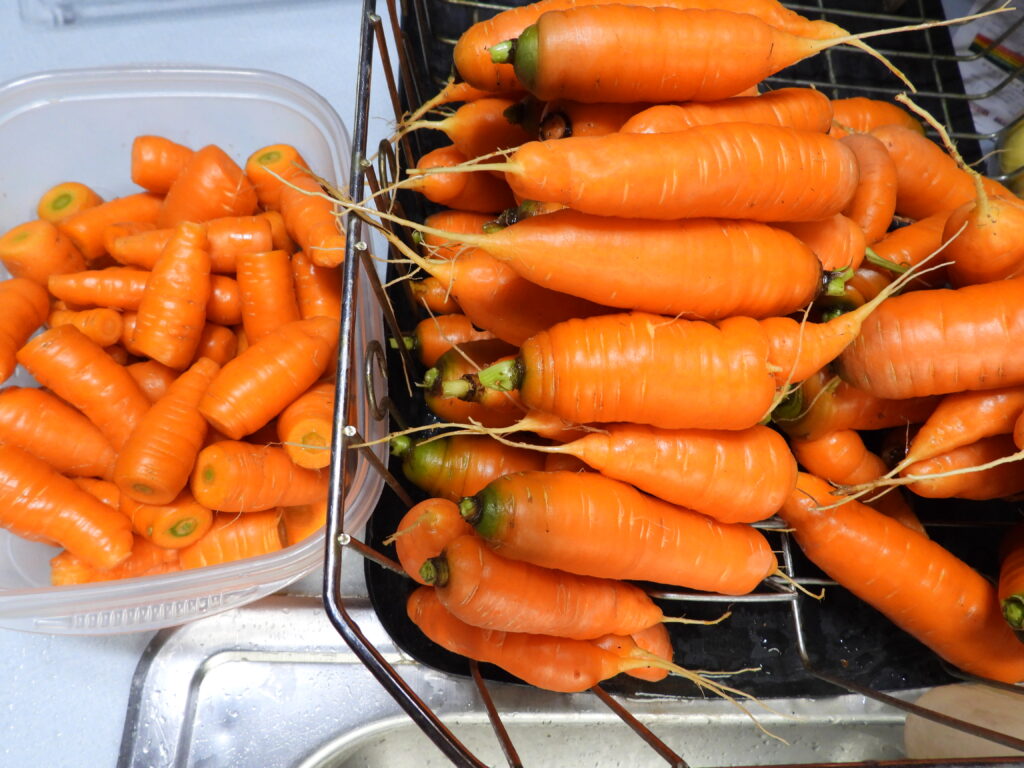
I used the littlest carrots from the harvest (on the left in the photo above), which wouldn’t keep long in storage. If you have sweet potatoes, I’d recommend using half carrots and half sweet potatoes, in which case you shouldn’t need any sugar.
If you prefer beans over meat, chickpeas are your best option in this soup.
Soup color depends on tomato color. I usually make it with red, but our tommy-toes were yellow this year. It tastes the same either way.